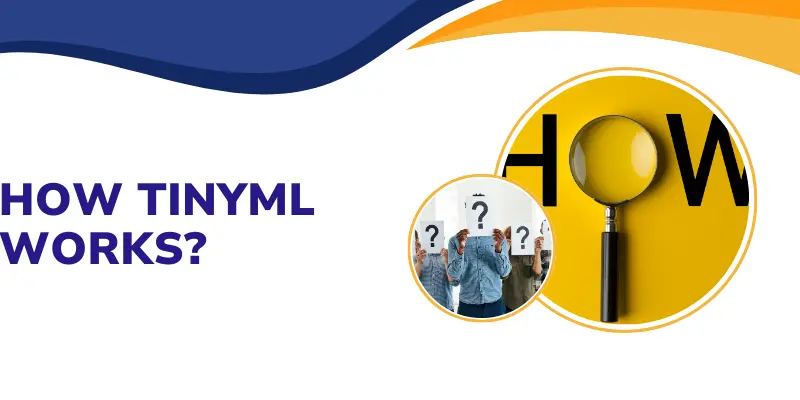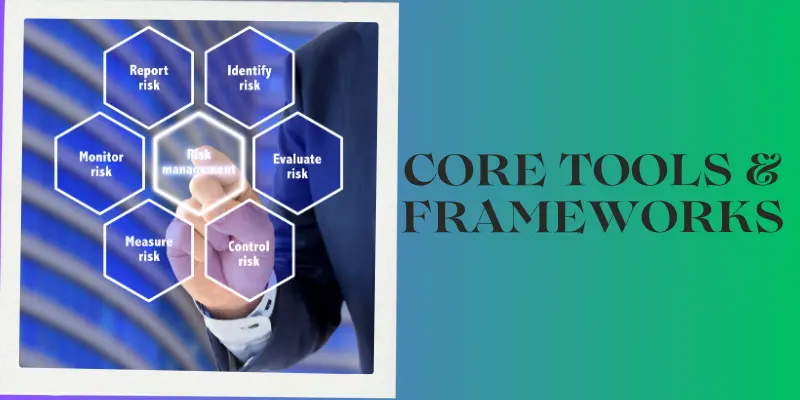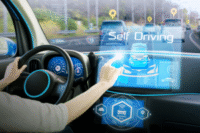What is TinyML? The Small AI Revolution You Can’t Ignore
Published: 13 Aug 2025
TinyML is the art of running machine learning models on small, low-power devices. It brings AI to the edge where data is created. No clouds. No delay. Just instant decisions on microcontrollers, sensors, and wearables.Why does it matter? Because it’s fast, private, and energy-efficient. From smart home gadgets to medical monitors, TinyML is quietly transforming our daily lives.
In this guide, you’ll discover how TinyML works, why it’s so powerful, and where it’s headed next.
What is TinyML & How TinyML Works?
TinyML may sound complex, but the process follows a clear path.

Think of it as teaching a very small brain to do smart tasks, then making it fit inside a tiny device. Here’s how it happens step-by-step:
1. Training the Model
It all starts with a large, powerful computer. Here, the machine learning model is trained using big datasets. For example, if you want the model to recognize a “wake word” like Hey Alexa, you feed it thousands of voice samples.
- This step happens in the cloud or on a high-performance computer.
- The goal is to teach the model to understand patterns and make predictions.
2. Model Compression
A trained model is usually too big for small devices. This is where compression comes in.
Two common techniques are:
- Quantization – Reducing the size of numbers used in the model without hurting accuracy too much.
- Pruning – Removing unnecessary connections and layers from the model so it runs faster and uses less memory.
Compression makes the model light enough to run on a microcontroller.
3. Edge Deployment
Once the model is small, it’s loaded onto a tiny device like a sensor, smartwatch, or home appliance. This is called edge deployment.
- “Edge” means the computing happens right where the data is collected, instead of sending it to a distant server.
- This keeps the process fast and private.
4. On-Device Inference
After deployment, the model starts working in real time. This step is called inference.
- The device collects data from its sensors.
- The model quickly makes a prediction or decision without needing internet access.
Example: Your smartwatch detecting your heart rate and alerting you if it’s too high.
Modern Advancements
TinyML is getting smarter with new research and tools. Some big leaps include:
- On-Device Training – Instead of training only in the cloud, small devices can now update their models with new data they see. This helps them adapt to changes in the environment.
- Co-Design Strategies – Engineers are designing hardware and models together so they fit perfectly. Projects like MCUNet (arXiv: 2403.19076) show how combining model design and device limits leads to faster, smaller, and more efficient AI systems.
In short, TinyML works by teaching a model on big machines, shrinking it, placing it inside small devices, and letting it think on its own instantly and efficiently.
Key Benefits of TinyML
TinyML isn’t just about making AI smaller. It’s about making it smarter for the real world. Here are the main benefits that make it so powerful:
1. Energy Efficiency & Longer Battery Life
TinyML is designed to run on devices with very low power.
- A model can work for weeks or even months on a small battery.
- This is perfect for sensors in remote areas or wearables you don’t want to charge every day.
Example: An environmental sensor checking air quality without needing to be plugged in.
2. Near-Zero Latency & Real-Time Inference
Because TinyML runs directly on the device, it responds almost instantly.
- No waiting for data to travel to a cloud server and back.
- Useful for safety-critical tasks where every millisecond matters.
Example: A car sensor detecting obstacles and warning the driver immediately.
3. Privacy & Reduced Bandwidth
Data stays on the device instead of being sent over the internet.
- This protects personal information from leaks or hacking.
- It also saves internet bandwidth.
Example: A voice assistant that understands commands without sending your voice recordings to a server.
4. Lower Cost & Offline Reliability
TinyML devices don’t need expensive hardware or constant internet. It is one of the ai tools that work without internet
- This reduces overall system cost.
- They keep working even in areas with no network coverage.
Example: A farm monitoring system that works in rural areas without Wi-Fi.
In short, TinyML delivers speed, privacy, low cost, and long-lasting performance all in a tiny package. This is why it’s becoming a key technology for the future of smart devices.
Core Tools & Frameworks
To make TinyML work, developers use special tools and frameworks.

These help create, shrink, and deploy machine learning models on tiny devices. Here are some of the most popular ones:
1. TensorFlow Lite for Microcontrollers (TFLite Micro)
This is one of the most widely used TinyML tools.
- What it does: Helps run machine learning models on devices with very little memory sometimes less than 256 KB RAM.
- Why it’s useful: It’s free, open-source, and works on many hardware platforms like Arduino boards and ARM Cortex-M chips.
- Example: A smart home sensor that detects motion using a model built in TensorFlow Lite.
2. MATLAB/Simulink Toolchains
MathWorks offers a set of tools for designing and deploying TinyML models.
- Model Compression: Helps shrink models using quantization and pruning.
- Embedded Code Generation: Automatically converts models into C or C++ code for microcontrollers.
- Why it’s useful: You can design visually in Simulink, simulate your model, and deploy it directly to hardware without manual coding.
- Example: Creating a vibration detection model for industrial machines and deploying it to a small sensor board.
3. Emerging Specialized Libraries & Toolkits
The TinyML ecosystem is growing fast, with new tools appearing every year. Some include:
- Edge Impulse: A platform that lets you collect data, train models, and deploy them to microcontrollers all from a web browser.
- uTensor: A lightweight library for ARM Cortex-M devices.
- MCUNet: A research project (DataCamp + arXiv + MathWorks references) that co-designs neural networks and microcontroller systems for better performance.
- TinyML GenAI Tools: New AI-assisted platforms that automatically choose the best model architecture for a given hardware limit.
These frameworks make it possible for anyone from hobbyists to industry engineers to bring AI to small devices. By choosing the right tool, you can go from an idea to a working TinyML project in days instead of months.
5. Real-World Use Cases of TinyML
TinyML is not just a lab experiment it’s already part of many products and industries. Here are some of the most common and exciting uses:
1. Smart Home Devices
TinyML makes smart gadgets faster, safer, and more private.
- Thermostats: Can learn your daily habits and adjust the temperature automatically.
- Voice Wake Words: Devices like smart speakers can listen for commands such as “Hey Google” or “Alexa” without sending every sound to the cloud.
- Example: A motion sensor that turns lights on instantly when you enter a room, without delay.
2. Industrial and Motor Control Applications
Factories use TinyML to keep machines running smoothly and prevent breakdowns.
- Vibration Monitoring: Sensors detect small changes in machine vibrations, warning operators before something breaks.
- Motor Efficiency: Models adjust motor speed for better energy savings.
- Example: A conveyor belt motor that slows down when no items are present, saving power.
3. Wearables and Health Sensors
TinyML powers small devices that track health and fitness.
- Smartwatches: Monitor heart rate, steps, and sleep without constant internet connection.
- Medical Devices: Detect irregular heartbeats or early signs of illness.
- Example: A fitness tracker that recognizes your activity like walking, running, or cycling without needing cloud processing.
4. Agriculture, Environmental, and Predictive Maintenance
TinyML helps farmers, scientists, and engineers monitor and predict problems early.
- Agriculture: Sensors measure soil moisture and control irrigation automatically.
- Environmental Monitoring: Track air quality, temperature, and pollution levels in remote areas.
- Predictive Maintenance: Machines alert you before they fail, reducing downtime.
- Example: A crop monitoring sensor that alerts a farmer when plants need water, even in areas with no Wi-Fi.
TinyML’s ability to work offline, use little power, and respond instantly makes it a perfect fit for these applications. As technology improves, we’ll see it appear in even more areas from personal safety to space exploration.
Challenges & Innovations
TinyML is powerful, but it also faces some big challenges. The good news? Researchers and engineers are finding smart solutions every day.
1. Hardware Constraints: Memory, Compute, Power
Tiny devices have very little space and power.
- Memory: Many microcontrollers have less than 256 KB of RAM, so large models can’t fit.
- Compute Power: These devices have simple processors, so they can’t handle heavy calculations.
- Battery Life: Models must run for months on small batteries.
Innovation: New chips are being designed to handle AI tasks more efficiently, and researchers are creating smaller model architectures that still perform well.
2. Compiler & Runtime Limitations
Even if a model is small, it needs special software (compiler and runtime) to run on a tiny device.
- Some compilers don’t fully support advanced AI models.
- Runtime systems may slow down processing or use too much memory.
Innovation: Projects like TVM and TensorFlow Lite Micro are improving compilers so they can optimize models for tiny devices automatically.
3. System–Model Co-Design and Efficient Pipelines
In the past, models were built first and then adjusted to fit the hardware. This often caused performance loss.
- System–Model Co-Design: Now, hardware and model design happen together from the start.
- Efficient Pipelines: Research projects like MCUNet (arXiv:2303.13569 and arXiv:2403.19076) show that combining neural network search with device-aware optimizations can boost speed, reduce memory use, and save energy.
Example: MCUNet designs a model specifically for a given microcontroller, so every bit of memory and processing power is used efficiently.
In short: The main hurdles limited memory, processing power, and software support are being overcome with new hardware, smarter compilers, and co-design strategies. These innovations mean TinyML will keep getting faster, smaller, and more capable.
Future Horizons
TinyML is still young, but its future is full of exciting possibilities. Here’s where the technology is headed:
1. On-Device Training and Continual Learning
Today, most models are trained in the cloud and then sent to devices. In the future, devices will train themselves right where they are.
- On-device training: A sensor could learn new patterns without ever sending data online.
- Continual learning: The model can keep improving over time as it sees more examples.
Example: A home security camera that learns to recognize new family members without uploading their pictures to the internet.
2. Advances in Automated Model Architecture Search
Designing a model that fits perfectly into a tiny device takes time and skill.
- Automated search: AI tools will soon be able to create the best model for each specific device automatically.
- Research like MCUNet (arXiv) shows that combining neural architecture search with hardware limits can produce models that are smaller, faster, and more accurate.
3. Broader Adoption Across Industries, Smarter Sensors, and Energy Harvesting Devices
TinyML will move into more industries as it becomes easier to use.
- Smarter sensors: Devices will collect and process more complex data right at the source.
- Energy harvesting: Future devices may power themselves using solar energy, vibrations, or heat removing the need for batteries.
Example: Environmental sensors in remote forests that monitor wildlife and run for years without maintenance.
The bottom line: TinyML’s future will bring devices that learn on their own, create custom models automatically, and run endlessly without traditional power sources. This will make AI truly everywhere silent, invisible, and incredibly useful.
Quick FAQ Section
1. What devices can run TinyML?
TinyML can run on very small, low-power devices. Examples include:
- Microcontrollers like Arduino and ESP32
- Small development boards like Raspberry Pi Pico
- Wearables, sensors, and smart home gadgets
As long as the device has a little memory and processing power, it can run a TinyML model.
2. How does TinyML differ from Cloud ML or Edge AI?
- Cloud ML: Data is sent to powerful servers for processing, then results are sent back. This can cause delays and needs the internet.
- Edge AI: Runs AI on larger edge devices like smartphones or gateways more powerful than microcontrollers but still close to the data source.
- TinyML: Runs AI directly on very small devices with ultra-low power use, no internet required, and minimal hardware.
3. Simple steps to start your first TinyML model
- Pick your hardware: Start with something simple like an Arduino Nano 33 BLE Sense.
- Collect data: Use built-in sensors (like microphone or accelerometer) to gather data.
- Train a model: Use tools like TensorFlow Lite or Edge Impulse to create and train your model.
- Compress and deploy: Shrink your model with quantization, then load it onto your device.
- Test and improve: Check results and adjust your model for better performance.
Conclusion
TinyML is bringing the power of machine learning to the smallest corners of technology. It allows devices to think, respond, and learn right where the data is created without relying on constant internet or heavy hardware. From smart homes to remote farms, its benefits are already shaping everyday life. As innovations in hardware, software, and design continue, we’ll see TinyML become even faster, smarter, and more energy-friendly. The best part? Anyone can start exploring it today. With the right tools and a bit of curiosity, you could build the next big idea small enough to fit in the palm of your hand.
FAQs
TinyML lets small devices run machine learning without needing the internet. It’s used in smart homes, wearables, farming sensors, and industrial machines to make quick decisions on the spot.
Machine Learning (ML) can run on powerful computers or cloud servers. TinyML is a special type of ML made small enough to work on tiny, low-power devices like microcontrollers.
AI is a big field that includes all smart computer systems. TinyML is just one part of AI, focused on running models on very small, low-energy devices.
TinyML models are often built using Python for training and C or C++ for running them on devices. Tools like TensorFlow Lite make it easier to connect both languages.
Yes, beginners can learn TinyML with simple tools like Arduino and Edge Impulse. You don’t need deep coding skills to start small projects.
No. TinyML works without the internet because it processes data right on the device. This makes it fast and private.
Yes. TinyML is designed to use very little power, so devices can run for months or even years on small batteries.
It’s used in voice assistants, smart thermostats, fitness trackers, industrial sensors, and even environmental monitoring systems.
No. Many TinyML projects can be done on affordable boards like Arduino Nano 33 BLE Sense or Raspberry Pi Pico.
Yes. Models can be replaced or updated with new versions, and future devices will even learn and adapt on their own.

- Be Respectful
- Stay Relevant
- Stay Positive
- True Feedback
- Encourage Discussion
- Avoid Spamming
- No Fake News
- Don't Copy-Paste
- No Personal Attacks

- Be Respectful
- Stay Relevant
- Stay Positive
- True Feedback
- Encourage Discussion
- Avoid Spamming
- No Fake News
- Don't Copy-Paste
- No Personal Attacks





